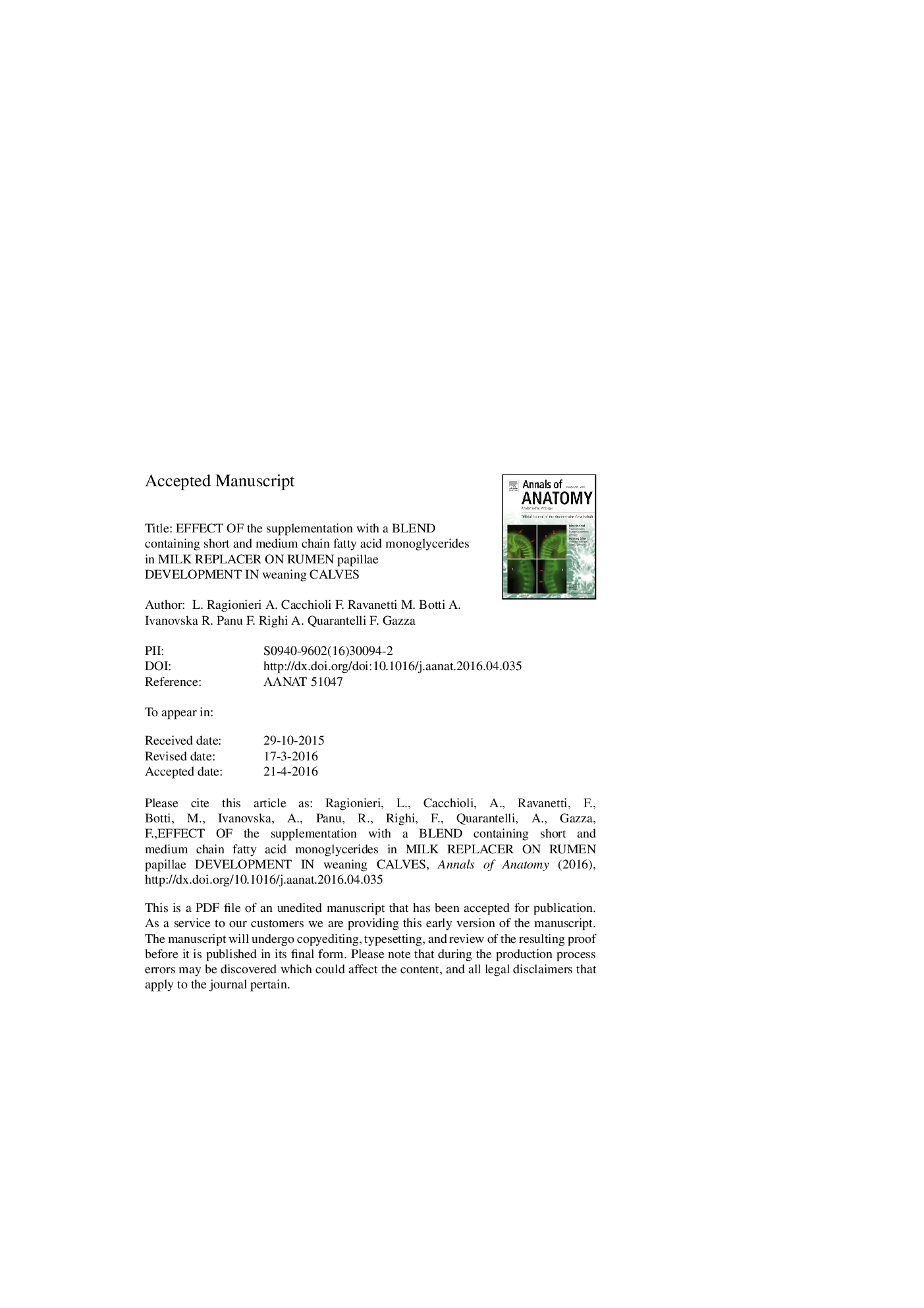| Article ID | Journal | Published Year | Pages | File Type |
|---|---|---|---|---|
| 8460693 | Annals of Anatomy - Anatomischer Anzeiger | 2016 | 38 Pages |
Abstract
No difference was found between groups either in growth performances or in mean number of papillae/cm2 of mucosa, total surface of papillae (mm2)/cm2 of mucosa or papillary size. In both groups, the morphology of the rumen epithelium was typical of parakeratosis. The cells of the stratum spinosum were directly transformed into swollen, ovoid, still nucleated keratinocytes, particularly at the papillary tip, probably as a result of unphysiological osmolarities caused by high concentrate intake. Degenerated squamous horn cells covered the “balloon like” cells forming several layers, particularly in the places of the rumen mucosa more protected from an abrasive action of solid feed. This was more evident in C animals. The squamous cells covering the papillary tip showed cytoplasmic protrusion, representing remains of the attachment sites of desmosomes, which increased the total absorptive surface and were more numerous and higher in T compared to C animals. It might be hypothesized that SMCFA supplementation in MR could better regulate epithelial cell proliferation and probably have an “emollient effect” leading to an easier “peeling” that might increase efficiency for nutrient transport across the epithelium.
Keywords
Related Topics
Life Sciences
Biochemistry, Genetics and Molecular Biology
Cell Biology
Authors
L. Ragionieri, A. Cacchioli, F. Ravanetti, M. Botti, A. Ivanovska, R. Panu, F. Righi, A. Quarantelli, F. Gazza,
